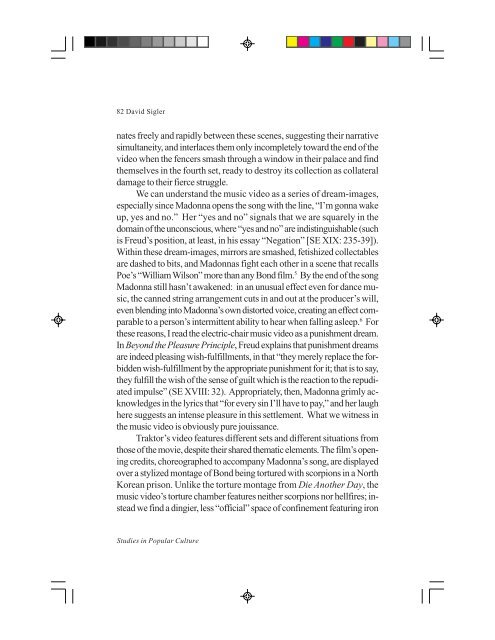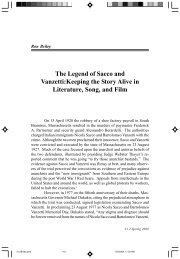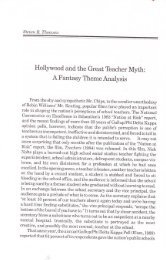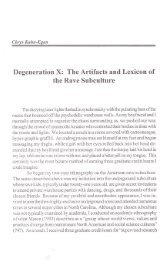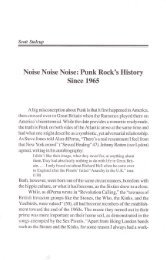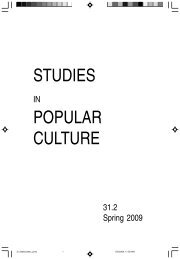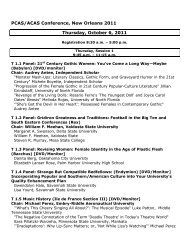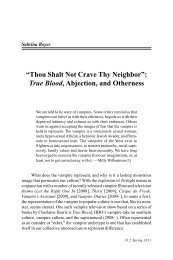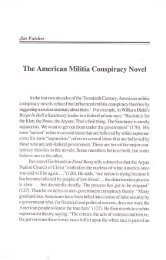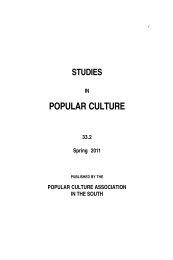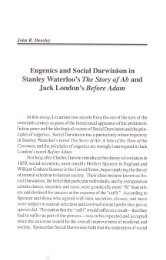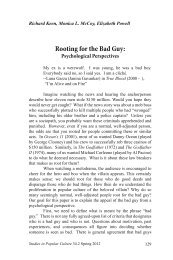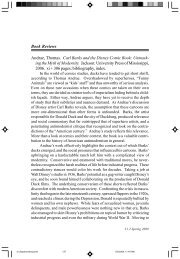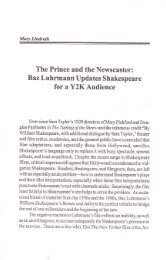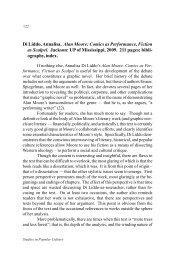'Sigmund Freud, Analyze This': How Madonna Situates - Popular ...
'Sigmund Freud, Analyze This': How Madonna Situates - Popular ...
'Sigmund Freud, Analyze This': How Madonna Situates - Popular ...
Create successful ePaper yourself
Turn your PDF publications into a flip-book with our unique Google optimized e-Paper software.
82 David Sigler<br />
nates freely and rapidly between these scenes, suggesting their narrative<br />
simultaneity, and interlaces them only incompletely toward the end of the<br />
video when the fencers smash through a window in their palace and find<br />
themselves in the fourth set, ready to destroy its collection as collateral<br />
damage to their fierce struggle.<br />
We can understand the music video as a series of dream-images,<br />
especially since <strong>Madonna</strong> opens the song with the line, “I’m gonna wake<br />
up, yes and no.” Her “yes and no” signals that we are squarely in the<br />
domain of the unconscious, where “yes and no” are indistinguishable (such<br />
is <strong>Freud</strong>’s position, at least, in his essay “Negation” [SE XIX: 235-39]).<br />
Within these dream-images, mirrors are smashed, fetishized collectables<br />
are dashed to bits, and <strong>Madonna</strong>s fight each other in a scene that recalls<br />
Poe’s “William Wilson” more than any Bond film. 5 By the end of the song<br />
<strong>Madonna</strong> still hasn’t awakened: in an unusual effect even for dance music,<br />
the canned string arrangement cuts in and out at the producer’s will,<br />
even blending into <strong>Madonna</strong>’s own distorted voice, creating an effect comparable<br />
to a person’s intermittent ability to hear when falling asleep. 6 For<br />
these reasons, I read the electric-chair music video as a punishment dream.<br />
In Beyond the Pleasure Principle, <strong>Freud</strong> explains that punishment dreams<br />
are indeed pleasing wish-fulfillments, in that “they merely replace the forbidden<br />
wish-fulfillment by the appropriate punishment for it; that is to say,<br />
they fulfill the wish of the sense of guilt which is the reaction to the repudiated<br />
impulse” (SE XVIII: 32). Appropriately, then, <strong>Madonna</strong> grimly acknowledges<br />
in the lyrics that “for every sin I’ll have to pay,” and her laugh<br />
here suggests an intense pleasure in this settlement. What we witness in<br />
the music video is obviously pure jouissance.<br />
Traktor’s video features different sets and different situations from<br />
those of the movie, despite their shared thematic elements. The film’s opening<br />
credits, choreographed to accompany <strong>Madonna</strong>’s song, are displayed<br />
over a stylized montage of Bond being tortured with scorpions in a North<br />
Korean prison. Unlike the torture montage from Die Another Day, the<br />
music video’s torture chamber features neither scorpions nor hellfires; instead<br />
we find a dingier, less “official” space of confinement featuring iron<br />
Studies in <strong>Popular</strong> Culture


